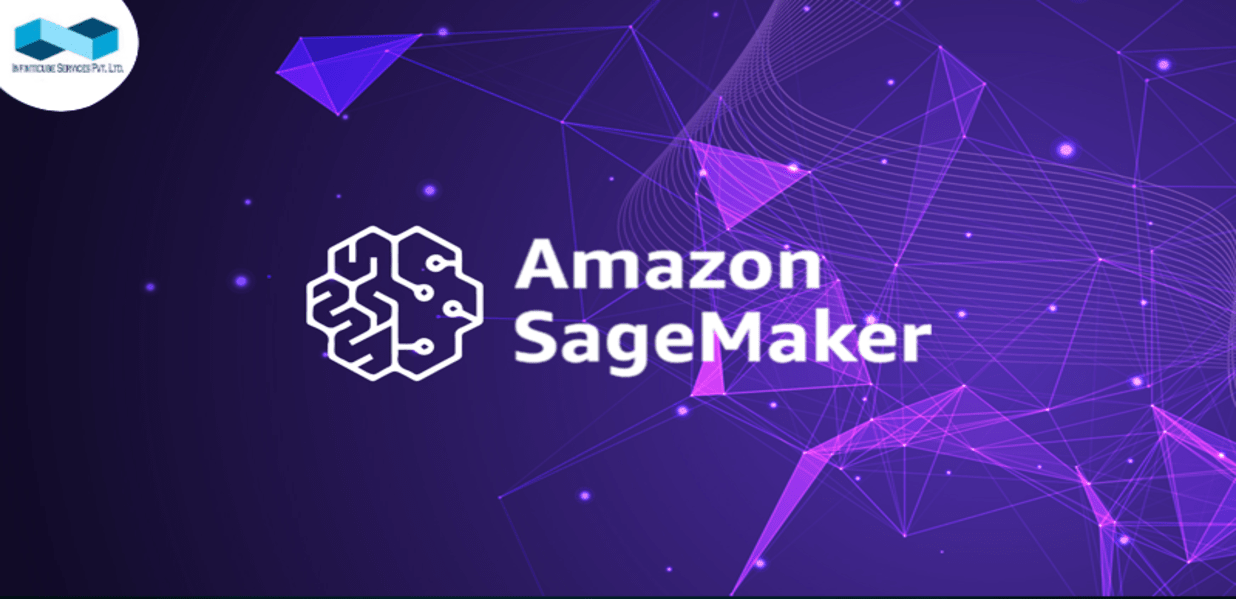


You can create, train, and deploy machine learning models using the AWS service Amazon SageMaker. It was made available by AWS in 2017 and has since become very well-liked. In this blog, we'll talk about SageMaker and how you can use it in your machine-learning project to deploy your model to thousands or millions of users in addition to building and training the model. Let's begin by discussing its uses.
But before going there, I would like to inform you that if you are looking for scalable machine learning development via SageMaker, contact Infiniticube or schedule a call with our Sagemaker expert. You can count on our expertise to provide you with the best service and solve your issue.
Any enterprise's machine learning project becomes more complex as it grows in scope. This is so that machine learning projects can continuously loop back into each other as they advance. Machine learning projects have three key stages: build, train, and deploy. And as the volume of data handled grows, so does its complexity. Additionally, your training data sets will typically be on the larger side if you want to create an ML model that actually performs well.
Various skill sets are typically needed at different stages of a machine-learning project. Data scientists conduct the research and develop the machine learning model, but it is developers who turn the model into a practical, scalable product or web-service API. However, not every business can assemble a team of experts with that level of expertise or coordinate data scientists and developers to deploy usable ML models at scale.
This is where Amazon Sagemaker comes into play. SageMaker, a fully managed machine learning platform, abstracts the need for software expertise, allowing data engineers to create and train the machine learning models they desire using a simple, user-friendly set of tools. While they capitalize on their core competencies in manipulating data and creating ML models, Amazon Sagemaker does the grunt work involved in turning these into a fully functional web-service API.
SageMaker's modular layout is one of its best features. You have the option to complete your training elsewhere and only use SageMaker for deployment. You can also choose to train your model without using the hyperparameter tuning functionality. This is a feature of SageMaker that ML developers or data scientists may really appreciate and also it ensures a reliable impact on your product.
Let's begin by understanding Amazon SageMaker with this in mind. We will discuss Important uses of SageMaker i.e. model building, model training, and model deployment and I will also tell you the benefits of each as well.
Jupyter notebooks are one of SageMaker's most fundamental features. These notebooks can create, train, and deploy ML models. Many data scientists use these notebooks for exploratory data analysis and model-building stages.
To explore the dataset, you might want to start by using a program like Pandas. How many rows are missing? How does the data distribution appear? Do you have data that is unbalanced, etc.? You can quickly obtain a baseline performance by building a variety of models, such as deep learning models from Keras or logistic regression, or decision trees from Scikit Learn. Therefore, there is no difference in the notebook interface when you switch to SageMaker.
What are the benefits of using SageMaker notebooks over local notebooks or notebooks hosted on an EC2 server, you might wonder? SageMaker, however, enables you to choose the type of machine you prefer. It eliminates the need for you to manage any complicated AMIs or security groups. This makes getting started very simple. Additionally, SageMaker gives users access to GPUs and large machines with lots of RAM, which may not be possible on a local setup.
The developed models are needed to be trained. You can train the model on the same notebooks, save the model artifacts and files in S3, and then deploy the model. But what if you're working on a model that takes a long time to train, such as a language translation model that employs sophisticated LSTM models? In this case, rather than using the Sagemaker notebook itself, which may be running on a small instance, you can simply call a GPU from the Sagemaker notebook itself to train the model. Because the majority of tasks revolve around creating, verifying, and exploring the model, you can save money by using the notebook in this manner. Again, you can simply use a different machine than the one running the notebook to perform the actual model training.
So, to recap, you can host your notebook on a cheap instance that can run continuously and won't cost much, and then use GPUs to train the model directly on the notebook.
Use prebuilt XGBoost (Extreme Gradient Boosting), Local Delivery Agent (LDA), Principal Component Analysis (PCA), or Seq2Seq models (Sequence to Sequence Models). These are all accessible through the high-level Python SDK known as Sagemaker. This is a good time to mention that SageMaker has a low-level SDK built with boto3, a popular Python library for interacting with other AWS services.
Finally, the most preferred use of SageMaker is for model deployment. You will still need to host your model somewhere, even if it is not overly complex and can be trained on your local machine.
Then there are problems with scaling the model:
The fact that SageMaker enables you to host the model behind an endpoint makes it ideal for all of this. A service that is currently running on an unidentified EC2 server is this endpoint.
Of course, you must still choose which instance type you prefer. However, you do not need to worry about configuring this server. When creating an endpoint, you can select options such as auto-scaling groups and the number of servers you want.
The SageMaker model is hosted by Amazon on a physical server that is available around the clock and does not switch on or off depending on when a request is made. Therefore, SageMaker falls somewhere between EC2 and Lambda on the serverless spectrum. Similar to EC2, the server runs continuously, but unlike Lambda, it is not configured or managed by you.
What's the catch, though? SageMaker is pricey and can be between 30 and 40 percent more expensive than AWS's equivalent EC2 server option. A t2.medium costs $33 per month, but a SageMaker equivalent, the ml.t2.medium, costs $40 per month. However, I believe that all of these benefits result in a significant cost difference overall. It is because you are only charged per second for model training time used on pricey servers. This brings me to my advantage, which is that as you use SageMaker in your model pipelines, you will have access to the available benefits. Amazon is constantly innovating and bringing new features, such as SageMaker Studio.
It might sound like SageMaker is a perfect solution for any ML issues you might run into, in my opinion. It is a very helpful tool, not a magic cure, in my opinion. Our DevOps experts can take care of all docker-related complex deployment issues while working with our ML Engineers.
We provide you with all expertise under one roof to successfully launch your ML Products. It is very difficult to apply the services of AWS efficiently because of lack of complete understanding of this particular field. I recommend hiring our AWS Sagemaker Consultancy Services to help you apply the services of AWS efficiently.
Infiniticube provides scalable Model Deployment via Amazon SageMaker. We have used Sagemaker to deploy ML models for various industries, saving our clients up to 70% on the expense of AI/ML infrastructure. You can share your requirements here or can schedule a call with our expert.

Hello there! I'm Jayesh Chaubey, a passionate and dedicated content writer at Infiniticube Services, with a flair for crafting compelling stories and engaging articles. Writing has always been my greatest passion, and I consider myself fortunate to be able to turn my passion into a rewarding career.
Our newsletter is finely tuned to your interests, offering insights into AI-powered solutions, blockchain advancements, and more.
Subscribe now to stay informed and at the forefront of industry developments.